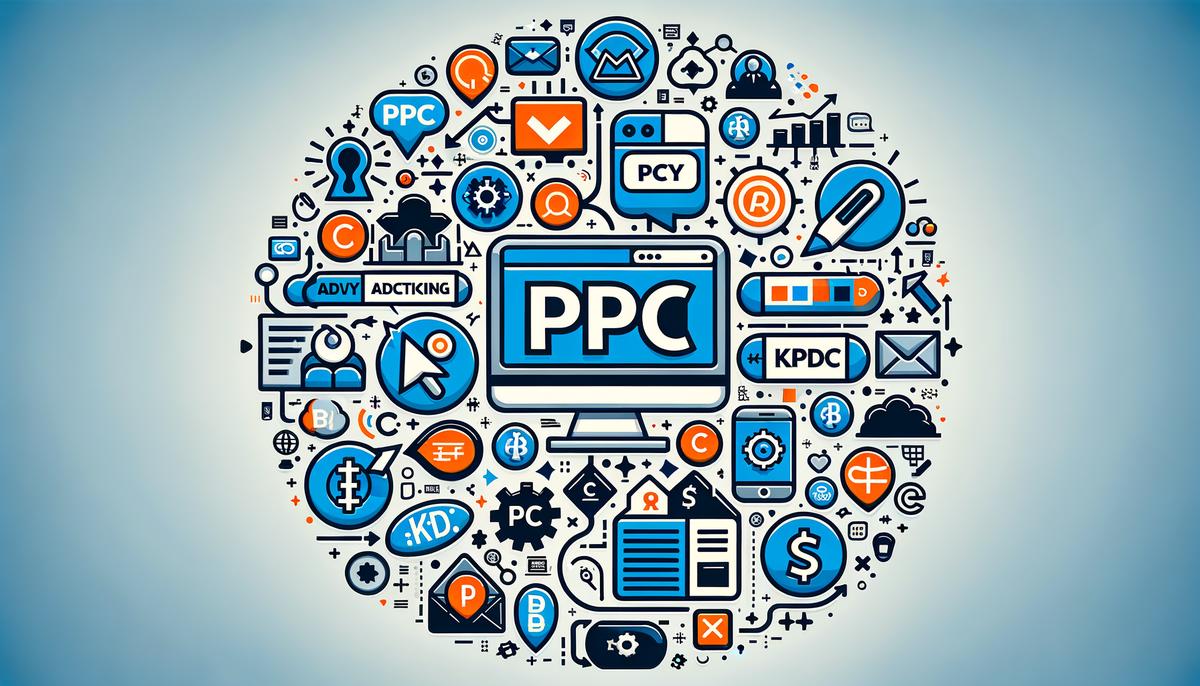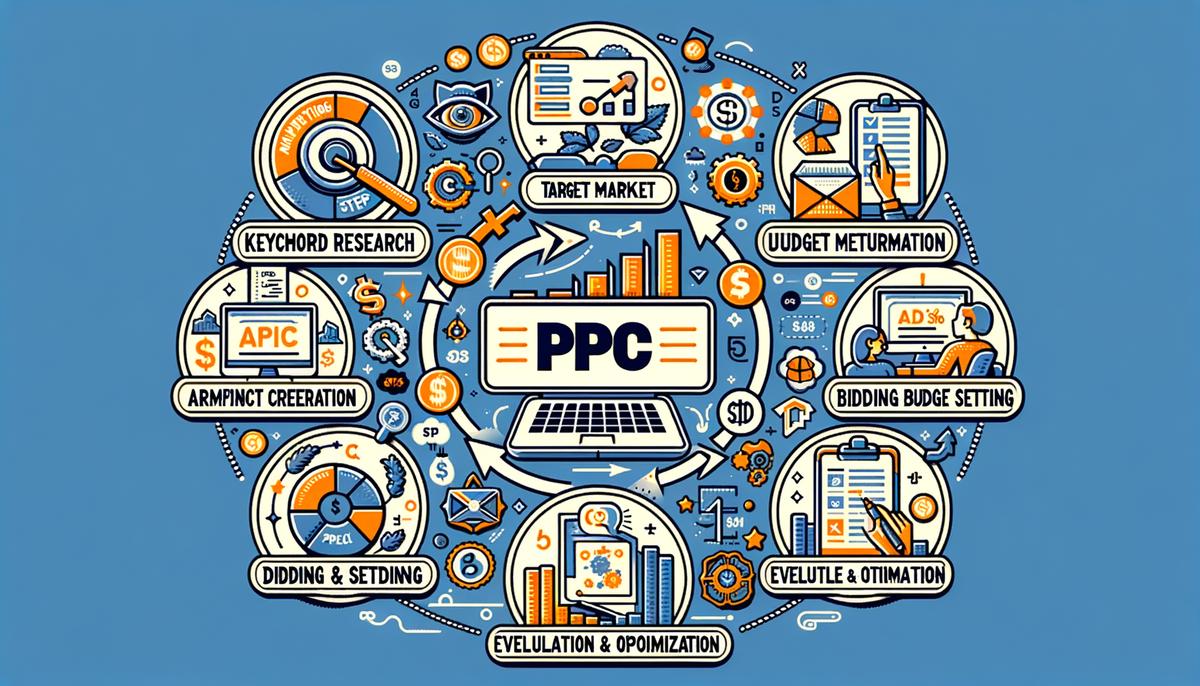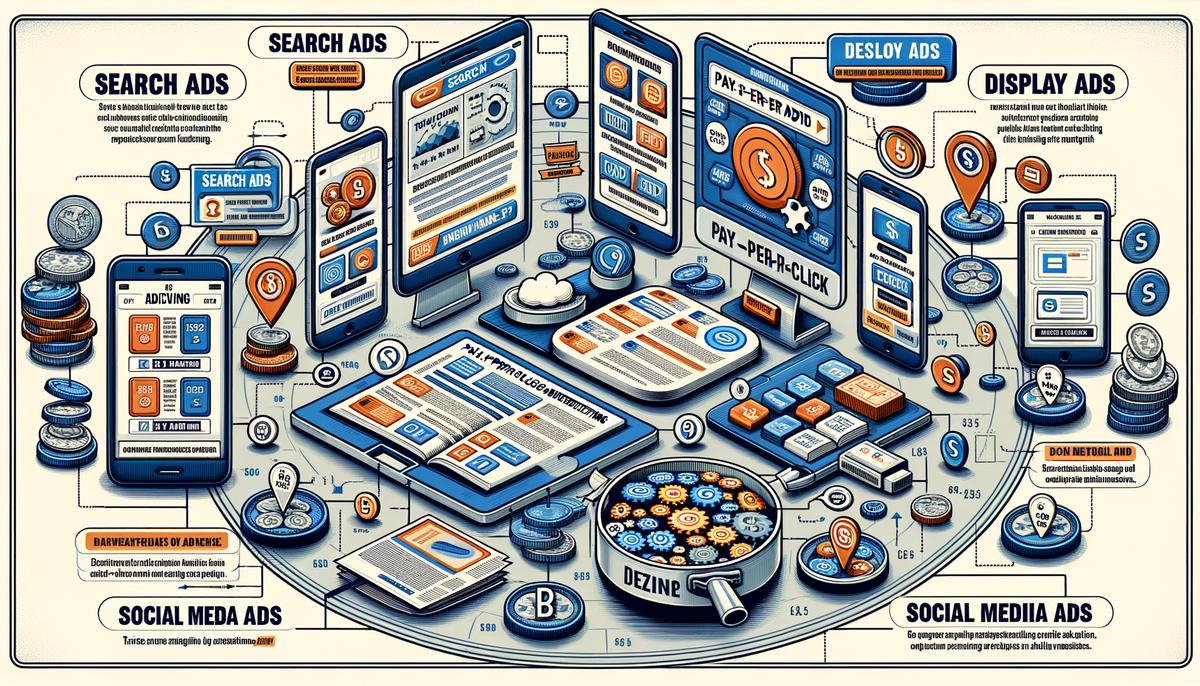Have you ever wondered how businesses get their products or services in front of potential customers quickly and effectively? Pay-Per-Click (PPC) advertising might just be the answer. This article is designed to unravel the mysteries of PPC, offering a clear and straightforward guide to understanding how it works, its various forms, and how to optimize your campaigns for better returns. From industry giants to local businesses, PPC offers a versatile tool for reaching target audiences, and understanding its mechanics can greatly benefit your marketing strategy.
Understanding Pay-Per-Click (PPC) Advertising
PPC Explained: Your Guide to Pay-Per-Click Advertising
So, you’ve probably heard the term PPC thrown around when talking about online advertising, but what exactly is it, and how does it work? Let’s break it down in simple terms so you can understand this powerful tool and maybe even leverage it for your business or project.
PPC stands for Pay-Per-Click, a model of internet marketing where advertisers pay a fee each time one of their ads is clicked. Essentially, it’s a way of buying visits to your site, rather than attempting to “earn” those visits organically through SEO or other methods. Think of it like a shortcut to getting potential customers to check out your offer or product.
The Most Common PPC Platform: Google Ads
When people talk about PPC, they often mean Google Ads. This platform allows you to create ads that appear on Google’s search engine results pages (or SERPs). You know, those ads you see at the top of the page when you search for something online? Those are likely PPC ads.
How Does PPC Work?
The process starts with a business deciding they want to run PPC ads. Here’s a simplified breakdown:
- Setting Up a PPC Campaign: You create an account on a platform like Google Ads, then set up your ad campaign. You’ll need to choose keywords related to your business or product. Keywords are what people type into the search engine when they’re looking for something. For example, if you sell handmade candles, your keywords might include ‘scented candles’, ‘handmade candles’, or ‘natural candles’.
- Bidding: PPC operates on a bidding system. You, as the advertiser, will bid on the chance to show your ad when someone searches for your chosen keywords. The bid amount is how much you’re willing to pay each time someone clicks on your ad. If your bid is among the highest, your ad will appear in the coveted spots on the search engine result page.
- Ad Ranking: However, it’s not just about how much you’re willing to pay. Google also considers the quality of your ad and landing page. A higher quality score can get your ad a better placement even if you bid less than your competitors.
- Paying for Clicks: If your ad appears and someone clicks on it, you pay the bid amount. This is where the term ‘pay-per-click’ comes from. Your goal is to get as many clicks as possible within your budget and, ideally, convert those clicks into customers.
Types of PPC
- Display Ads: These are visual ads that appear on websites within the Google Display Network. They can be an effective way to build brand awareness.
- Social Media Ads: Platforms like Facebook and Instagram offer their form of PPC advertising. Since you can target your ads based on users’ interests and demographics, social media ads can be highly effective.
- Remarketing: This type focuses on users who have visited your website before. Remarketing ads remind them of the products they viewed, encouraging them to return and make a purchase.
Benefits of PPC
- Speed: Unlike organic search, PPC can generate traffic to your website quickly.
- Targeting: PPC allows for precise targeting, whether by keywords, demographics, location, or even time of day.
- Measurability: Everything is measurable with PPC. You can see exactly how much you’re spending and what you’re getting in return, whether it’s website visits, sales, or lead generation.
Starting Your PPC Journey
Getting started with PPC can seem daunting, but with a bit of learning and experimentation, it can be an excellent tool for driving traffic and sales. Choose your platform, research your keywords carefully, and always keep an eye on your campaigns to optimize for the best results. There’s a wealth of resources and communities online dedicated to PPC where you can find tips, advice, and support as you venture into pay-per-click advertising.

Setting Up a Successful PPC Campaign
Creating a PPC campaign that actually converts isn’t just a matter of setting it up and hoping for the best. It requires a strategic approach, understanding your audience, and continuously optimizing your ads and landing pages. Here, we’ll dive into the practical steps and tactics to ensure your PPC campaign not only attracts clicks but converts those clicks into tangible results—be it sales, sign-ups, or inquiries.
Crafting Your Ad Copy to Stand Out
Your ad copy is the bridge between the click and the conversion. It needs to be compelling enough to make someone stop scrolling and click through. Start with a clear, strong headline that addresses your target audience’s main problem or desire. Use action verbs to inspire action and include a value proposition—why should they click on your ad? Make it clear what they will get by taking this action.
Selecting the Right Keywords
Choosing the right keywords is about understanding the intent behind the search. Are people looking for information, comparison shopping, or ready to buy? You want to target keywords that align with your campaign goals. If you’re aiming for conversions, focus on high-intent keywords that indicate readiness to purchase. Use keyword research tools to expand your list and discover long-tail keywords, which are less competitive and can drive more targeted traffic.
Designing a Landing Page That Converts
The journey doesn’t end at the click. Your landing page plays a crucial role in converting visitors. It should be directly related to the ad they clicked on and provide a seamless experience. The headline should echo the promise made in your ad, and the page should clearly explain the offer or value proposition. Including customer testimonials, trust badges, and a clear call-to-action (CTA) can significantly increase your conversion rates.
Setting Up Targeted Ad Groups
Organize your PPC campaign into targeted ad groups based on similar keywords. This allows for more relevant ad copy and landing pages for each group, improving your Quality Score on platforms like Google Ads. A higher Quality Score can lead to lower costs per click and better ad positions.
Optimizing for Mobile
With the increasing use of smartphones for online searches, your PPC campaign must be optimized for mobile. This means ensuring your ads, keywords, and landing pages are mobile-friendly. Fast loading times, easy navigation, and clear calls-to-action are key for converting mobile users.
Testing and Adjusting
PPC campaigns require constant tweaking and testing. Use A/B testing to compare different elements of your ads and landing pages, like headlines, CTA buttons, or images. Analyze the performance data to see what’s working and what’s not. Adjust your bids, test new keywords, and refine your ad copy based on the data. Remember, small changes can sometimes lead to significant improvements in conversion rates.
Utilizing Remarketing
Remarketing allows you to target users who have interacted with your site but didn’t convert. By showing these potential customers tailored ads based on their previous actions, you can bring them back to complete the conversion process. It’s a powerful way to increase your conversion rates and make the most of your traffic.
Conclusion
An effective PPC campaign that converts isn’t about a set-it-and-forget-it approach. It demands constant monitoring, optimizing, and understanding your audience at a deeper level. Focus on crafting compelling ad copy, selecting the right keywords, creating landing pages that convert, and never stop testing and adjusting. By following these steps, you’re well on your way to not just attracting clicks, but driving meaningful conversions that impact your bottom line.

Optimizing PPC Campaigns for Maximum ROI
Maximizing PPC Campaigns: A Closer Look
So, you’ve dipped your toes into the world of Pay-Per-Click (PPC) advertising, and by now, you’re pretty clued in on the basics. You know about Google Ads, you’ve picked out your keywords with care, and maybe you’ve even got a few ad campaigns under your belt. But the big question remains: How do you squeeze every last drop of value from your PPC campaigns? Well, hang tight, because we’re about to dive into some strategies that could rocket your PPC campaigns to the next level.
Fine-Tuning Your Keyword StrategyKeywords are the backbone of PPC campaigns, but it’s not just about selecting them; it’s about refining them. Consider incorporating long-tail keywords into your strategy. These are longer, more specific phrases that may have lower search volumes but less competition and higher conversion rates. By targeting these, you could lower your cost-per-click (CPC) while snagging visitors with a clearer intent to buy or engage.
Go Beyond GoogleWhile Google Ads might be the king of PPC, don’t put all your eggs in one basket. Platforms like Bing Ads offer access to a different audience segment, often at a lower cost. Diversifying your PPC efforts can help you reach a broader audience and potentially yield a higher ROI.
Leveraging Ad ExtensionsIf you’re not already using ad extensions, now’s the time to start. Ad extensions expand your advertisement, offering additional information like phone numbers, site links, or specific product offerings. This doesn’t just make your ad more informative; it also increases its size, making it more noticeable on the search results page. More visibility often translates to higher click-through rates (CTRs).
Mastering the Art of Bid AdjustmentBid adjustments allow you to show your ads more or less frequently based on where, when, and how people search. You can adjust your bids for different devices, locations, and times of the day. For instance, if you know your audience converts more on mobile devices during evening hours, you can increase your bids for those particular conditions.
Analyzing Your CompetitorsUnderstanding what your competitors are doing in their PPC campaigns can provide you with invaluable insights. Tools like SEMrush and SpyFu allow you to peek at your competitors’ keywords, ad copy, and even budget allocation. This information can help you identify gaps in your strategy or areas where you can differentiate your ads from the competition.
Embrace A/B TestingA/B testing, or split testing, is crucial for optimizing your PPC campaigns. By creating two versions of your ad or landing page, you can test different elements like headlines, call-to-actions (CTAs), or images to see which performs better. Continuous A/B testing helps refine your campaigns for better performance and ROI.
Remarketing: Don’t Forget Those Who Got AwayRemarketing allows you to target users who’ve interacted with your brand but didn’t convert. Whether they visited your site or clicked on a previous ad, remarketing keeps your brand in front of these potential customers. Tailored ads based on their previous interactions can entice them to return and complete their purchase or engagement.
Stay on Top of TrendsPPC isn’t static; it’s an ever-evolving landscape. Stay informed about the latest trends and updates in PPC advertising. Whether it’s new ad formats, changes in search engine algorithms, or emerging platforms, keeping your strategy current can position you ahead of the competition.
Unlocking the full potential of your PPC campaigns requires a mix of strategic thinking, constant optimization, and an openness to experiment. Regularly review your campaigns’ performance, stay adaptable, and remember, every click has the potential to be a valuable customer. Happy optimizing!

Understanding PPC Analytics and Metrics
Tracking the success of your PPC (Pay-Per-Click) campaigns is key to making sure your advertising dollars are being put to good use. But with so many metrics available, which ones should you focus on? Let’s dive into the crucial metrics that will give you insights into how well your PPC efforts are performing.
1. Click-Through Rate (CTR)
CTR is the percentage of people who click on your ad after seeing it. It’s a clear indicator of how appealing your ad is to your target audience. A high CTR means your ad copy, and keywords are in sync with what people are searching for. If it’s low, it might be time to revisit your ad copy or the keywords you’re targeting.
2. Conversion Rate
While getting clicks is great, what really matters is whether these clicks are turning into measurable actions, such as purchases, sign-ups, or downloads. The conversion rate tells you the percentage of visitors who have performed the desired action after clicking your ad. This metric is crucial for understanding the actual effectiveness of your PPC campaigns in driving your business goals.
3. Cost Per Conversion
Also known as cost per action (CPA), this metric shows how much each of these conversions is costing you. It helps you understand if the money you’re spending on your PPC campaigns is justifiable by the value of the conversions you’re getting. Keeping an eye on your CPA ensures that your PPC campaigns remain cost-effective and sustainable.
4. Quality Score
Google Ads uses the Quality Score to determine the relevance and quality of your ads and keywords. It’s influenced by factors like CTR, the relevance of your keywords, the quality of your landing page, and your ad’s performance on Google. A higher Quality Score means a higher ranking for your ad at a potentially lower cost.
5. Return on Ad Spend (ROAS)
ROAS measures the return you’re getting from your ad spend. It’s calculated by dividing the revenue generated from your PPC campaigns by the cost of those campaigns. ROAS gives you a direct insight into how profitable your PPC ads are. In other words, it tells you if the money you’re putting into PPC is worth it.
6. Impression Share
Impression share shows the percentage of times your ads were shown out of the total available impressions your ads could have received, based on your current keywords and settings. If you’re not reaching a high percentage of your potential impressions, you might need to increase your bids or improve your ad quality to compete more effectively.
7. Average Position
Now renamed “Search Absolute Top Impression Share” and “Search Top Impression Share” in Google Ads, these metrics give you insight into how your ad typically ranks against competing ads and how often your ads appear at the top of the search results page. While not a direct indicator of success, these metrics can help you understand if your ads are visible enough to drive clicks and conversions.
By tracking these key PPC metrics, you can gain valuable insights into the performance of your campaigns, allowing you to make informed decisions on how to optimize and improve your PPC strategy. Remember, the goal is not just to drive traffic but to attract the right kind of traffic that will contribute to your business goals. Happy analyzing!

Mastering PPC advertising is an ongoing process that requires patience, experimentation, and a keen eye for detail. By focusing on the strategies discussed, from crafting standout ad copy to optimizing campaigns for mobile users, you can enhance your PPC efforts and see tangible results. Whether you’re new to the world of online advertising or looking to refresh your strategy, remember that success in PPC is about connecting with your audience in meaningful ways. Embrace the data, adapt your approaches based on performance insights, and remain committed to refining your campaigns. In doing so, you’ll not only increase your visibility online but also drive meaningful engagement that supports your business objectives.


